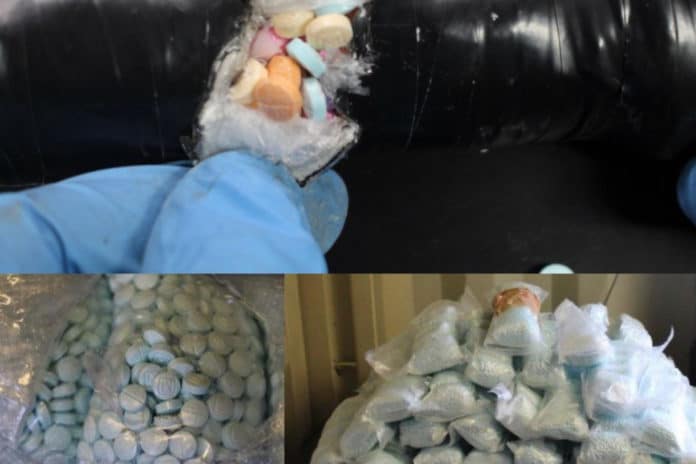
Our southern border is like a spigot that won’t stop running. It’s not just the five million people who’ve crossed it during the Biden administration; it’s also illegal drugs. Like a noxious weed, smuggled fentanyl is infiltrating communities across the nation, becoming the number one killer of 18- to 45-year-olds.
Manufactured fentanyl is 50 times more potent than heroin, 100 times more potent than morphine. A miniscule amount — the size of three grains of rice — is enough to kill. Crafty dealers mix fentanyl with other drugs, like heroin or Adderall to increase its potency, to the detriment of unknowing buyers.
Over the weekend, Customs and Border Protection confiscated more than half a million fentanyl pills at the Arizona/Mexico border, many of which were “rainbow” pills. But the pills, obviously intended for kids, are still showing up around the country. Rainbow fentanyl appears either as thick pieces that look like colorful sidewalk chalk or pills that look like Sweet Tarts or Skittles.
The numbers are staggering. Last year, DEA agents seized 20 million fake pills containing lethal doses of fentanyl. In June, DEA agents seized 22 pounds of fentanyl in Texas — nearly enough to kill every Minnesota resident. This is a common occurrence.
Almost 1,300 people did die from overdoses in Minnesota in 2021, an increase of 22 percent from 2020. Though most deaths are in the metro area, the growth is in Greater Minnesota, including Rice County, where Jill Adams lives.
Jill is well-versed in fentanyl. Two months ago, I shared the story of how her son Caleb, an exceptional athlete, died of a fentanyl overdose while in a detox facility. Caleb went through treatment six times before he died after ingesting what he thought was Percocet (but was fentanyl).
Though Caleb started taking Xanax to manage his anxiety, Jill says most athletes like her son become addicted after using pain meds. But Caleb’s journey — oxycodone, meth, heroin, and fentanyl — is typical.
Jill knew Caleb was using drugs, but she didn’t realize how bad his problem was. Over time, she’s learned more about the warning signs. She’s committed to helping others who share Caleb’s fate or her heartache.
Parents should watch for signs of use — dark circles under the eyes; grey complexion; long-sleeved shirts in summer; an insatiable sweet tooth; open sores; itching; swollen tongue; and more.
As she approaches the first anniversary of Caleb’s death, Jill is putting the pieces together, learning more about how drugs affect the brain and why it’s so difficult to stop using them. She understands how withdrawal is so painful it’s like having a leg amputated without pain meds.
Jill was helping addicts before Caleb became one of them. But now she’s shifting gears. “I used to be on the front line. But now that I lost my son, I’m going to go to the back of the line and catch family members when they fall.”
Along with others who share her passion, she’s forming a nonprofit called Healing Circle. Beginning in September, the group will meet at Northfield’s Bethel Lutheran Church. Jill hopes people will take advantage of the support from others with a shared experience.
She’s both hopeful and frustrated. Despite her openness about Caleb, Jill’s discovered not everyone can get past the stigma associated with drug use and overdose. One woman she spoke with was so ashamed her son died from fentanyl she left Minnesota. Another, a professor at a local college, attended one group meeting but never returned. She was afraid her story would get out in the small community in which she lives and works.
The numbers speak for themselves. Under our current leadership, criminals are sending poison across the border and killing young people at astonishing rates. Though parents like Jill can share their stories and DEA and border patrol agents can catch some smugglers, we need more than a Band Aid on a bullet wound.
President Biden has reversed course on a previously effective border policy. Vice President Harris, the designated border czar, has shown little interest in addressing the resulting border crisis. Congress hasn’t taken meaningful action. So, Americans must act. As we cast our votes for our congressional representatives in November, let’s keep Caleb and Jill and the thousands of others like them top of mind.
















